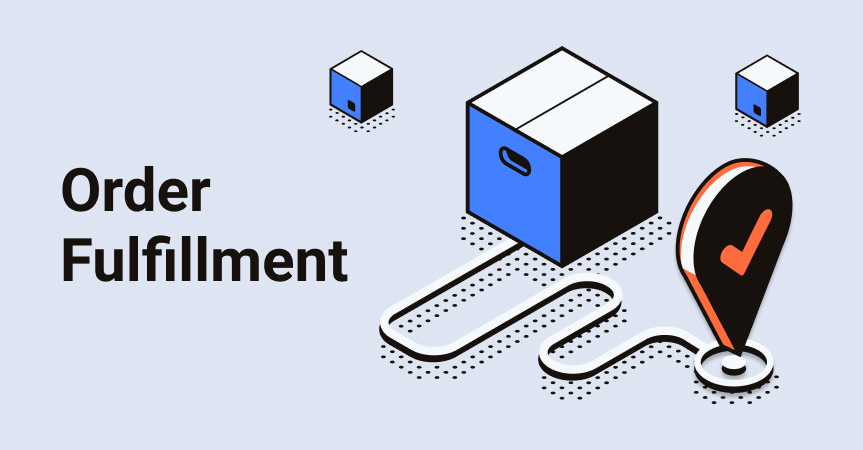Order Fulfillment

It is essential to provide high-quality services for businesses that sell products online. This means that customer orders need to be delivered on time and undamaged. If you’re dealing with people from different corners of the world, order fulfillment can make the process much smoother.
What is order fulfillment?
Order fulfillment is the process of handling your customer’s online purchase and ensuring the buyer will receive the package. There are several essential steps in this method. For example, warehousing, selecting and packing the product, shipping it, and notifying the customer about the order shipment. Though the process may sound simple, it may have some drawbacks. Which includes multiple people involved, unforeseen factors delaying the transaction, etc. This makes the process far more complicated than it seemed at first sight.
The process of order fulfillment
- Rесеіvіng goods from the manufacturer
An ecommerce business has several ways of taking care of the inventory. The owner can either outsource the order fulfillment to a company that specializes in this or stock the inventory in-house.
A dropshipping supplier handles these processes for a dropshipping business. Essentially this nullifies any involvement of the business owner with the ordered products.
- Storing goods
If ecommerce entrepreneurs decide to warehouse the goods themselves, they will have some additional tasks waiting for them. The list of these tasks consists of stocking the items and keeping a count of the inventory. As a result, this maintains the possible delays in orders’ assembling and dispatching.
However, in the dropshipping business, the dropshipping supplier is responsible for the storage. Which puts the business owner at ease and allows to not have to think about this.
- Prосеѕѕіng orders
At this stage, companies that manage their own inventories pick the goods from their storage facility, package the items, and move them to a shipping station. Ecommerce businesses that outsource the order fulfillment process don’t need to think about this part, because their partner handles the order process. Therefore, all that they need to do is simply pass on the order request. The same goes for a dropshipping business: you send the order information to your supplier and they take care of the rest.
- Shipping the goods
This part is mainly for ecommerce business owners who manage the shipping process themselves. Once the package is at the shipping station, they choose the best shipping method depending on its size, weight, and the specific requirements of the order.
For dropshipping entrepreneurs, similar to the processes before, the supplier takes care of the shipping. The store owner’s responsibility is only to inform the customer of the package’s successful dispatch and share the tracking information (if available).
- Processing rеturnѕ
The process of order fulfillment isn’t complete until the customer receives their order! This is crucial and something that many ecommerce entrepreneurs simply forget or don’t pay enough attention to.
Keep in mind that sometimes consumers will be disappointed with their purchase and can demand a refund.
For people who are used to online shopping, money return guarantees are essential. This shows that the business can be trusted and improves the chances of a successful purchase.
To ease the process of getting, replacing, and refunding the returned goods for both you and your potential customers, you need to create a clear returns policy.
If a refund does happen, dropshipping entrepreneurs are going to have to contact their supplier and demand a refund from them. And to not wait for the results of the dispute, they are going to have to return their own money, to maintain customer satisfaction.
Order fulfillment in dropshipping
For a dropshipping business owner, the order fulfillment process is quite simple.
Regular wholesale and ecommerce businesses who sell products from their own storage facilities handle the order fulfillment process from the moment an order is placed until it’s delivered and the customer is satisfied with it.
However, dropshipping businesses avoid most of these instances. Since a dropshipping store doesn’t need to stock up on inventory and store goods, its main concern is to transfer the exact order details and buyer’s mailing address to the supplier and manage refunds if necessary.
Furthermore, modern software solutions can automate a significant part of the job, which can make the process of order fulfillment even easier for dropshipping business owners. Automated dropshipping tools like the AliDropship plugin make it possible to redirect the order details to the right supplier in a couple of clicks, without wasting the store owner’s time on doing this manually.






